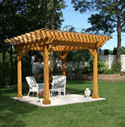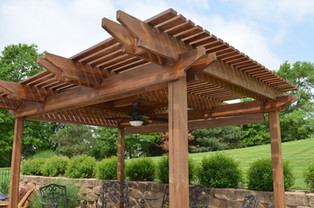Designing an ideal backyard space requires forethought and an eye for style. Knowing which features to include in a yard often boils down to what homeowners want to achieve in the space. Will it be a relaxing oasis or a central entertaining focal point?
People often look to various structures to add height and visual interest to outdoor spaces. Homeowners will likely come across structures like arbors, gazebos, pergolas, and even trellises as they wade through the variety of features they can incorporate into backyard plans. Each of these structures can add appeal, but they also can offer shelter from the sun and privacy when enjoying the yard. There are significant differences between each structure, so here's an in-depth look at what sets them apart.
Arbor: An arbor is one of the more simple garden structures. It is usually a frame that is arched or square-cornered. Most homeowners use it as an entryway to a garden or even the front of the home. Those with green thumbs may cover the arbor with climbing and trailing plants. The Spruce says arbors date back to early Egyptian and Roman gardens and were used throughout Europe by the late 16th century.
Pergola: The words arbor and pergola are often used interchangeably, but to suggest the two structures are the same would not be accurate. Pergola comes from the Italian word Pergula, which means Projection. Pergolas were once projected from exterior walls and supported on one side by pillars or columns. Today, arbors are usually freestanding units with two or four posts. Pergolas may be connected on one side to a home or another structure. Some are freestanding units supported by four posts. Pergolas tend to be larger and offer more privacy and shade than arbors.
Gazebo: Gazebos are more defined garden buildings, states the contractor referral site Network. Gazebos are freestanding units that can be built in various shapes. Some are octagonal, others are square. Like a pergola, a gazebo is supported by columns and may have low railings or built-in benches. Gazebos also may have a more solid roof than arbors or pergolas, providing sun and other weather protection. The roof may have added architectural appeal, like a cupola.
Trellis: A trellis is a simple, geometrically-shaped structure that provides a surface for climbing plants. A trellis also may support fruit-bearing trees. Trellis work may be used in conjunction with an arbor or pergola, or be installed on fencing.
Incorporating structures into backyard designs can provide functionality and appeal.













